Question
Four of the five are alike in a certain way and hence
forms a group. Who among the following does not belong to that group? Study the following information carefully and answer the questions below: There are nine persons i.e. A, B, C, D, E, F, G, H and I are sitting in a triangular table such that three of them are sitting at the corner of the table and two persons are sitting on each side of the table. Some of them are facing inside the table and some are facing outside the table. Not more than two persons facing the same direction are adjacent to each other. F sits second to the left of H who sits at the corner of the table. Only one person sits between F and C who faces inside the table. D sits at one of the corner of the table but she is not an immediate neighbour of C. I sits third to the left of C. A is an immediate neighbour of H and both are facing the opposite direction to each other. E does not share the side with I and sits second to the left of G who does not sit at the middle of the table. B sits third to the left of I and both are facing the same direction. E faces the same direction as D faces which is opposite to that of F.Solution
F sits second to the left of H who sits at the corner of the table. As per this statement, there are two possible cases and the arrangement will look like this: 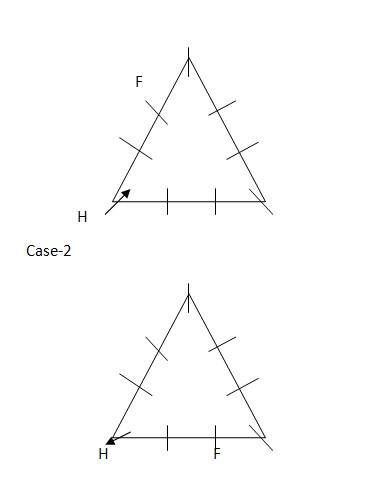 Only one person sits between F and C who faces inside the table.
Only one person sits between F and C who faces inside the table. 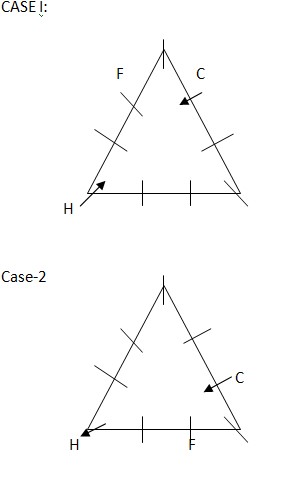 D sits at one of the corner of the table but she is not an immediate neighbour of C.
D sits at one of the corner of the table but she is not an immediate neighbour of C. 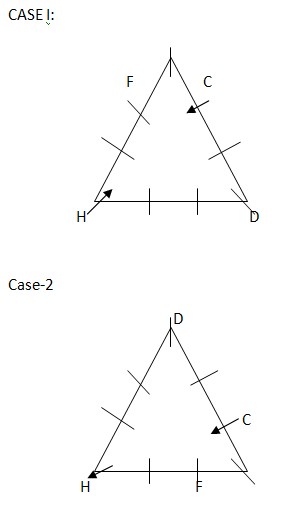 I sits third to the left of C.
I sits third to the left of C. 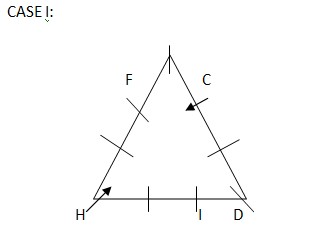 Case-2
Case-2 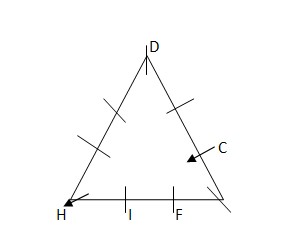 A is an immediate neighbour of H and both are facing the opposite direction to each other. As per this statement, CASE I will further get split into one more case and the arrangement will look like this:
A is an immediate neighbour of H and both are facing the opposite direction to each other. As per this statement, CASE I will further get split into one more case and the arrangement will look like this: 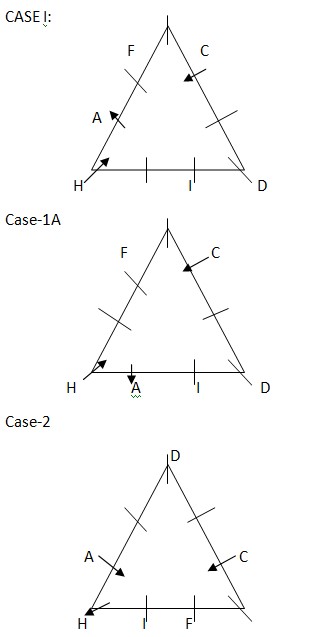 E does not share the side with I and sits second to the left of G who does not sit at the middle of the table. B sits third to the left of I and both are facing the same direction. As per this statement, CASE I and CASE I (A) will get eliminated and we will continue with CASE II and the arrangement will look like this:
E does not share the side with I and sits second to the left of G who does not sit at the middle of the table. B sits third to the left of I and both are facing the same direction. As per this statement, CASE I and CASE I (A) will get eliminated and we will continue with CASE II and the arrangement will look like this: 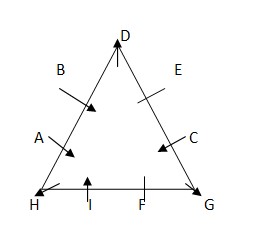 E faces the same direction as D faces which is opposite to that of F. As per this statement, the final arrangement will look like this: CASE II:
E faces the same direction as D faces which is opposite to that of F. As per this statement, the final arrangement will look like this: CASE II: 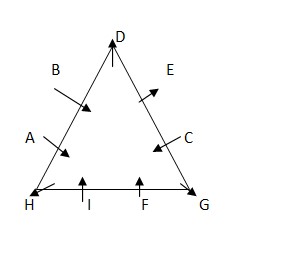
As per which section of the Maharashtra Rent Control Act, 1999 the Government premises are exempted from application of this act?
Who is empowered under the LLP Act to order investigation of the LLP under certain circumstances?
Section 34 of the Payment and Settlement Systems Act exempts which entities from its application?
Under Negotiable Instrument Act, no notice of dishonour is necessary
What does the principle of territoriality in IP law imply?
When two or more persons, by fighting in a public place, disturb the public peace, they are said to commit_______
When a conciliation is ongoing on a subject matter of dispute between the parties, ____________
Institution of suits is provided under which section of CPC?
According to Indian Partnership Act, 1932 What is one of the requirements for partners regarding information sharing in a business firm?
Criminal Conspiracy as per IPC means_________________
Relevant for Exams:


